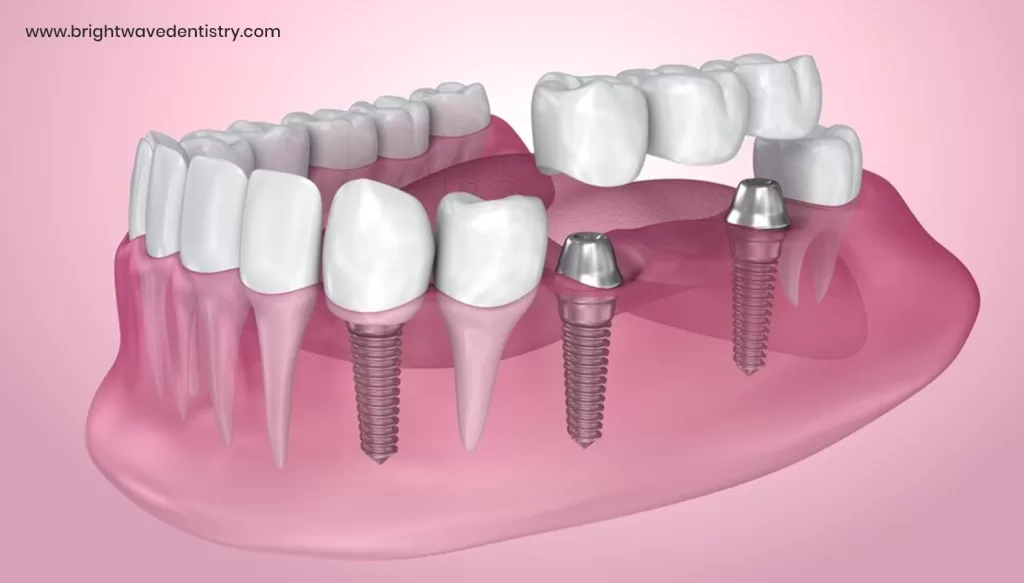How Much is a Full Set of Dental Implants?
How much is a full set of dental implants? This is a common question for those considering a long-term solution to tooth loss. Dental implants are not only an aesthetic enhancement but also crucial for maintaining oral health by preventing bone loss and supporting facial structure. However, the cost can be significant and varies widely based on several factors. In this article, we’ll break down the costs, types of implants, and financing options to help you make an informed decision.

Dental implants are a revolutionary solution for individuals who have lost one or more teeth due to injury, decay, or other health conditions. They provide a permanent, stable, and natural-looking alternative to dentures or bridges. The importance of dental implants extends beyond aesthetics; they play a crucial role in maintaining oral health by preventing bone loss and supporting facial structure.
However, the cost of dental implants can be a significant concern for many. Understanding the various factors that contribute to the total expense is essential for anyone considering this procedure. This article delves into the detailed costs associated with a full set of dental implants, offering a comprehensive guide to help you make an informed decision.
Types of Dental Implants
There are several types of dental implants available, each suited to different needs and anatomical considerations:
- Endosteal Implants: The most common type, these implants are placed directly into the jawbone.
- Subperiosteal Implants: These are placed under the gum but above the jawbone, suitable for patients with insufficient bone height.
- Zygomatic Implants: Used when there is significant bone loss in the upper jaw, these implants anchor in the cheekbone.
- Mini Dental Implants: Smaller in size, these are used primarily for stabilizing lower dentures.
Factors Affecting the Cost of Dental Implants
The cost of dental implants can vary widely based on several factors:
- Geographic Location: Costs can differ significantly between regions and countries.
- Dentist’s Experience and Expertise: More experienced practitioners may charge higher fees.
- Material Used for Implants: Titanium and zirconia are common materials, with varying costs.
- Pre-Surgical Procedures: Additional procedures like bone grafts or sinus lifts can increase the total cost.
- Post-Surgical Care: Follow-up visits and maintenance also contribute to the overall expense.
Breakdown of Costs
A full set of dental implants involves several components, each with its own associated costs:
- Initial Consultation and Diagnostics: This includes X-rays, CT scans, and other diagnostics.
- Surgery Costs: The actual procedure to place the implants.
- Cost of the Implant Itself: The physical implant, usually made of titanium.
- Abutment and Crown Costs: The abutment connects the implant to the crown, which mimics a natural tooth.
- Additional Procedures: Bone grafts, sinus lifts, and other preparatory surgeries.
- Post-Operative Care and Follow-Ups: Essential for ensuring the success of the implants.
Cost Comparison by Country
The cost of dental implants can vary widely by country:
- United States: $3,000 to $4,500 per implant
- Canada: $2,500 to $4,000 per implant
- United Kingdom: £2,000 to £2,500 per implant
- Australia: AUD 2,500 to AUD 5,000 per implant
- India: INR 20,000 to INR 50,000 per implant
- Mexico: $1,000 to $2,500 per implant
Insurance and Financing Options
While dental implants can be costly, there are several ways to manage the expense:
- Dental Insurance Coverage: Some plans cover part of the cost.
- Payment Plans: Many dental offices offer financing options.
- Medical Loans: Specialized loans for medical procedures.
- Government Programs and Grants: Available in some regions to assist with costs.
Steps to Get Dental Implants
The process of getting dental implants involves several steps:
- Initial Consultation: Assessment and planning.
- Treatment Planning: Customized plan based on individual needs.
- Surgery: Placement of the implants.
- Healing Period: Allowing time for the implants to integrate with the bone.
- Abutment Placement: Connecting the implant to the crown.
- Crown Placement: Final step to complete the restoration.
Risks and Complications
While dental implants have a high success rate, they do come with potential risks:
- Common Risks: Infection, implant failure, nerve damage.
- Long-Term Complications: Peri-implantitis, bone loss.
- Mitigating Risks: Proper oral hygiene, regular check-ups.
Success Rates and Longevity
Dental implants boast a success rate of over 95%. Factors that influence their longevity include:
- Average Success Rates: Generally high across various demographics.
- Factors Influencing Longevity: Patient health, implant care.
- Maintenance Tips: Regular cleaning, avoiding hard foods.
Personal Stories and Case Studies
Hearing from individuals who have undergone the procedure can be enlightening:
- Testimonials from Patients: Real-life experiences and outcomes.
- Case Studies of Different Scenarios: Varied cases to illustrate different outcomes.
Expert Insights
Gaining insights from dental professionals can provide valuable perspectives:
- Quotes from Dental Professionals: Expert opinions and advice.
- Advice on Choosing the Right Implant Provider: Tips for selecting a qualified dentist.
Conclusion
Dental implants offer a durable and effective solution for tooth loss, but understanding the associated costs is crucial. By considering factors such as location, material, and additional procedures, patients can better prepare for the financial investment. With proper planning and care, dental implants can provide a lasting improvement in both oral health and quality of life.

Pingback: Cost of Dental Implants in Las Vegas Nevada - Bright wave dentistry